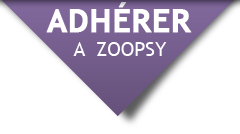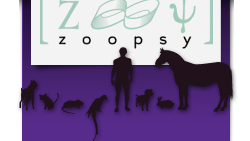
|
||||
 |
 |
|||

1st Annual Meeting of the European College of Animal Welfare and Behavioural Medicine, 17th Annual Meeting of the European Society of Veterinary Clinical Ethology - Avignon - 25 au 26 novembre 2011
Call for papers1st Annual Meeting of the European College of Animal Welfare and Behavioural Medicine – ECAWBM (formerly ECVBM-CA), 25 th November 2011Congress Scope:The ECAWBM congress is an international meeting of researchers with clinicians, educators and students with diverse yet common interests in applied behavioural medicine and welfare of companion animals as well as livestock species. Congress Topics:Free communications about ongoing and finished research in applied behaviour, behaviour problems and animal welfare
17th Annual Meeting of the European Society of Veterinary Clinical Ethology – ESVCE, 26th November 2011THEME OF THE MEETING : Social communication in companion animalsCongress Scope:The ESVCE congress is an international meeting of clinicians, educators, students and researchers with diverse yet common interests in applied behavioural medicine of companion animals as well as livestock species. Congress Topics:State of the art lectures by invited speakers on communication in horses, parrots and dogs Free communications on clinical cases and reviews of practical solutions for them in applied behaviour and animal welfare.
Deadline for submitting abstracts : 31st May 2011
Abstract submission instructionsPlease send the abstracts by mail. Authors can suggest whether their oral contribution
is
intended
for
ESVCE
26th
November
2011
or
ECAWBM
25th
November
2011
A maximum of two (2) abstracts may be accepted from each presenting (or first) author (e.g., 1 spoken and 1 poster presentation, or 2 posters). Unattended posters are not allowed, although a presenting author may delegate a co-author to present a poster on behalf, if she/he cannot attend in person. For any questions: please contact.
Guidelines for abstract submission for ESVCE conferencesFor oral communications the author can select either the ECAWBM day or the ESVCE day. All authors are asked to indicate clearly which day they prefer. The secretary of the committee will contact the authors about whether their abstract has been accepted. Responsibility for the programme lies with the organising committee and their decisions are final. Poster presenters must be present on both days. There will be 3 categories for abstract submission:
All presentations will be labelled in each category so that attendees understand the origin and content of each presentation.
There are 3 categories to select from for your presentation:
The abstract must be in English, can be no longer than 300 words and should be concise, informative and explicit. Providing a list of topics to be covered, or using statements such as “results will be discussed” or “a new theory will be developed” is not appropriate. All submissions will be reviewed anonymously by at least four (4) independent referees, according to the pre-set criteria including: abstracts having the components required (as listed below), the quality of each component, overall clarity of the abstract, and importance of the research to the field. Research abstracts must include the following components:
Critical review abstracts must include the following components:
Case reports abstracts must include the following components:
Commercial papers
Abstract formatting instructions1. All abstracts must be typed, single-line spaced and must fit on one page. 2. Font size should be Times New Roman 12 throughout. 3. First line: indicate intention in capital letters – LONG OR SHORT SPOKEN PRESENTATION, COMMERCIAL PRESENTATION, DAY of PREFERENCE, OR POSTER 4. Second line: descriptive, concise, meaningful title – in bold. 5. Third line: names of all authors. Underline the presenting author. 6. Fourth line: addresses of authors (institution, city, country) and e-mail address of presenting author. 7. Then leave two blank lines. 8. On the next line, the text of the abstract – no longer than 300 words
Abstracts must be submitted electronically (MS Word attachment). Two copies of the abstract must be submitted, one with the authors' names and affiliations removed. All abstracts that do not follow the guidelines will be rejected. Since the abstracts are going to be published as such, the author is responsible for the quality of the translation in English. It is suggested that all abstracts are checked by a native English speaking person.
|
Conception, mises à jour : Karine SANCHE (KDJ Webdesign)
Thèmes du site : agressivité chien - comportement du chat - comportementaliste vétérinaire - conférences comportement animal - congrès comportement animal - éthologie animaux - hiérarchie chien - hyperactivité chien - morsures chien - problème de comportement chien - propreté chien - soin animaux - thérapie comportementale animal - traitement comportement - vétérinaire comportement - conseils éducation - éducation chien - éducation chat - comportement chien -